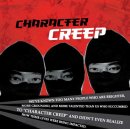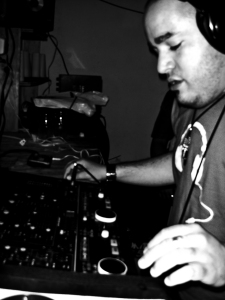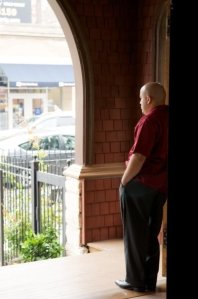Last month’s Christianity Today featured an article on the state of evangelicalism by CT’s managing editor, Mark Galli. In the middle of the article was the following:
Dealing with Cultural Captivity
Another wonderful development is our increased awareness of the variety of races and ethnicities that make up our world. We’re still figuring out what a multiethnic evangelicalism looks like, but no one is arguing that we shouldn’t figure it out! For this we can thank not only America’s changing demographics but also the prophetic voices and examples of men like John Perkins and Rudy Carrasco.
Yet here too we see a constant horizontal temptation. A leading Asian evangelical has just released a book that seeks to “free the evangelical church from Western cultural captivity.” He begins with what everyone recognizes as entrenched problems: our individualism, consumerism, materialism, racism, and cultural imperialism.
But while acknowledging how firmly enslaved we are, the author repeatedly says things like, “Lessons from the black church or lessons arising out of the theology of suffering can lead to freedom from the Western, white captivity of the church.” And in an interview to publicize the book, he says, “In fact, the more diverse we become, Christianity will flourish.”
As if the flourishing of church depends on our ability to make it diverse. As if liberation from the thick chains of cultural captivity is had by learning lessons from others. As if blacks, Asians, and Native Americans are not themselves captive to entrenched cultural ideologies. Missing here and in many such worthy efforts is an emphasis on God’s power, not human example, to free us from the principalities and powers, and on the good news that it is not we who must build the shalom community but the ones who receive it as gift and promise.
As you may have guessed, the “Asian evangelical” referenced in the article was me. And in my opinion, the author took my quotes out of context. At the same time, not citing my name or the name of the book, the reader does not have the option of following up to check the source and refute the author’s take on my book. On the online version, many readers responded to CT’s approach to my book. Here are some excerpts:
I have read and reviewed Soong-Chan Rah’s book “The Next Evangelicalism ” (not listed in the book resources above), and feel Galli’s comments demonstrate Rah’s premise perfectly: that the western white church (read: we) has long dismissed the value of the perspectives of the global church by asserting that ‘we’ have the corner on truth.
I am surprised that the article references Soong-Chan Rah’s book, The Next Evangelicalism, without naming Soong-Chan Rah nor listing the book among the other “books mentioned in this essay.” . . . we can learn from others. This truly is the message of Soong-Chan Rah’s book–for the predominantly white Evangelical church to learn from other Evangelicals, especially those from other cultures.
Galli misinterpreted Soong-Chan Rah’s reasons for why the church needs to listen to the stories of Black, Asian, Latino and other Christians outside of the dominant white church. His name or book title wasn’t referenced, but I would encourage readers to check out “The Next Evangelicalism” by Soong-Chan Rah for themselves.
The Asian writer he mentioned–not using his name or even mentioning his book–seems to validate that writers argument that we are still being held captive by a “white evangelicalism”
As a journalist, i was deeply disappointed to see the lack of fair and accurate coverage/criticism of Soong-Chan Rah’s “The Next Evangelicalism” by one of the most influential Christian media voices. But as a Christian, I see this as an opportunity for the columnist to actively engage and discuss with Rah why Sunday mornings at church still remain one of the most segregated hours in America.
Mark Galli’s response on the webpage was the following:
Thank you all for the comments–affirming and critical. This is always helpful for an author. Let me respond to the concerns of the friends of Professor Rah, who seem particularly upset. I did not name him or his book precisely because I respect his ministry (the careful reader will see how I did this at various points in the article with other prominent people in our movement). I did not want to suggest that I am hostile to Professor Rah or his book as such, only certain ideas therein. This is a style of disagreement I’ve learned from C.S. Lewis (see his Abolition of Man, for example), and I think it charitable way to express disagreement–focus on ideas and put personalities in the background. Naturally, if I were to do a full review of the book, that would be different. That being said, it was indeed an oversight that his book was not mentioned at the end of the piece, and we’ll correct that asap. It is a book that expresses well his ideas, and readers should be aware of it.
Responses to Galli’s post:
I do not agree with his reasoning behind leaving Rev. Soong-Chan’s name out of his article. It appears more of an intentional slight (to allow myself some cynicism given the nature of Mark’s criticism) and regardless of what C.S. Lewis wrote, the format is inappropriate to the medium.
It strikes me as disingenuous for you to claim you did not mention Soong-Chan Rah’s book out of respect when you had no difficulty citing other books and authors. It would have been a greater mark of respect to mention the author and the book and to give people a chance to decide for themselves whether his work is accurately described and evaluated. Leaving him out renders him invisible–a state very familiar to persons of color in the Evangelical world. Thus Dr. Rah’s book.
So here’s the response I sent to CT. (Hopefully it’ll be published in the next issue). I have also had some e-mail contact with Mark Galli and with permission will post some of his e-mail comments.
While finding many notable challenges in Mark Galli’s article, I have two significant concerns regarding the article.
Mr. Galli misrepresents my perspective by taking a quote from my book and my interview out of context. While I believe that diversity is an important part of the growth of the church in the United States, my perspective is that God is bringing that diversity and that the church needs to live into the work of God. A more careful reading of my book would lead to that conclusion.
In addition, by not mentioning my name or my book, it does not allow the reader to find this out for him/herself.
Your thoughts? What more should be said?








